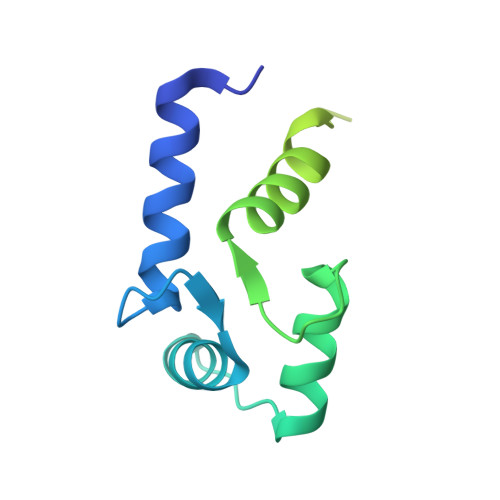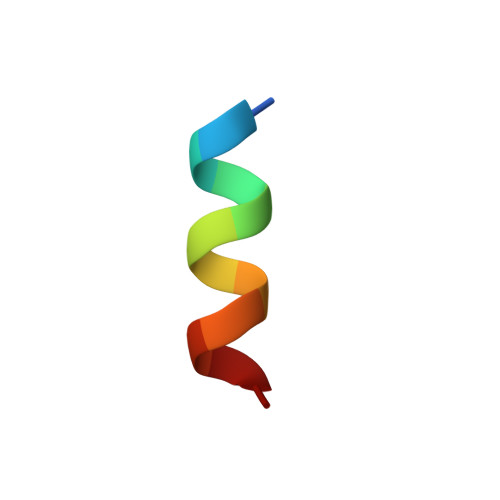NMR Structures of Calmodulin Bound to Two Separate Regulatory Sites in the Retinal Cyclic Nucleotide-Gated Channel.
Bej, A., Ames, J.B.(2022) Biochemistry 61: 1955-1965
- PubMed: 36070238
- DOI: https://doi.org/10.1021/acs.biochem.2c00378
- Primary Citation of Related Structures:
8DGH, 8DGK - PubMed Abstract:
Retinal cyclic nucleotide-gated (CNG) channels (composed of three CNGA1 and one CNGB1 subunits) exhibit a Ca 2+ -induced reduction in channel open probability mediated by calmodulin (CaM). Defects in the Ca 2+ -dependent regulation of CNG channels may be linked to autosomal recessive retinitis pigmentosa and other inherited forms of blindness. Here, we report the NMR structure and binding analysis of CaM bound to two separate sites within CNGB1 (CaM1: residues 565-589 and CaM2: residues 1120-1147). Our binding studies reveal that CaM1 binds to the Ca 2+ -bound CaM N-lobe with at least fivefold higher affinity than it binds to the CaM C-lobe. By contrast, the CaM2 site binds to the Ca 2+ -bound CaM C-lobe with higher affinity than it binds to the N-lobe. CaM1 and CaM2 both exhibited very weak binding to Ca 2+ -free CaM. We present separate NMR structures of Ca 2+ -saturated CaM bound to CaM1 and CaM2 that define key intermolecular contacts: CaM1 residue F575 interacts with the CaM N-lobe while CaM2 residues L1129, L1132, and L1136 each make close contact with the CaM C-lobe. The CNGB1 mutation F575E abolishes CaM1 binding to the CaM N-lobe while L1132E and L1136E each abolish CaM2 binding to the CaM C-lobe. Thus, a single CaM can bind to both sites in CNGB1 in which the CaM N-lobe binds to CaM1 and the CaM C-lobe binds to CaM2. We propose a Ca 2+ -dependent conformational switch in the CNG channel caused by CaM binding, which may serve to attenuate cGMP binding to CNG channels at high cytosolic Ca 2+ levels in dark-adapted photoreceptors.
- Department of Chemistry, University of California, Davis, California 95616, United States.
Organizational Affiliation:

















